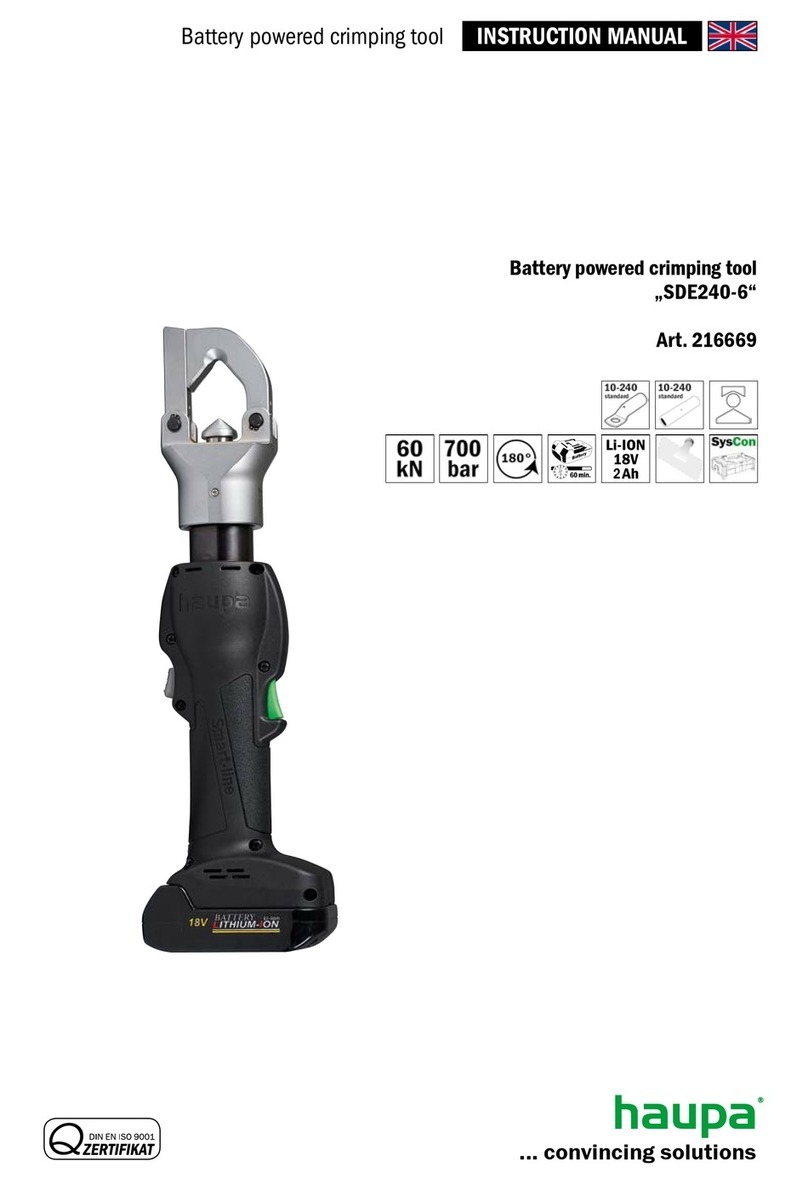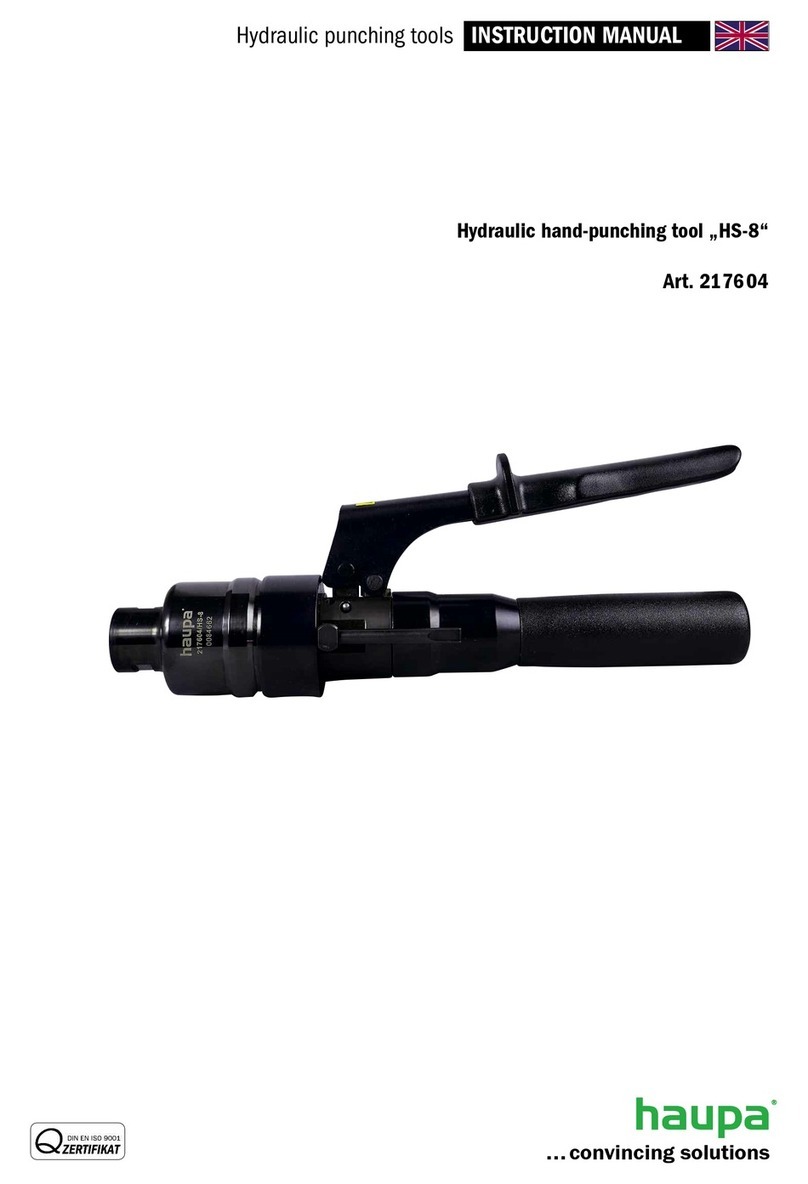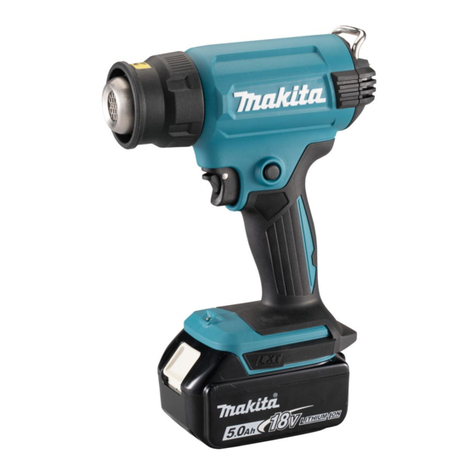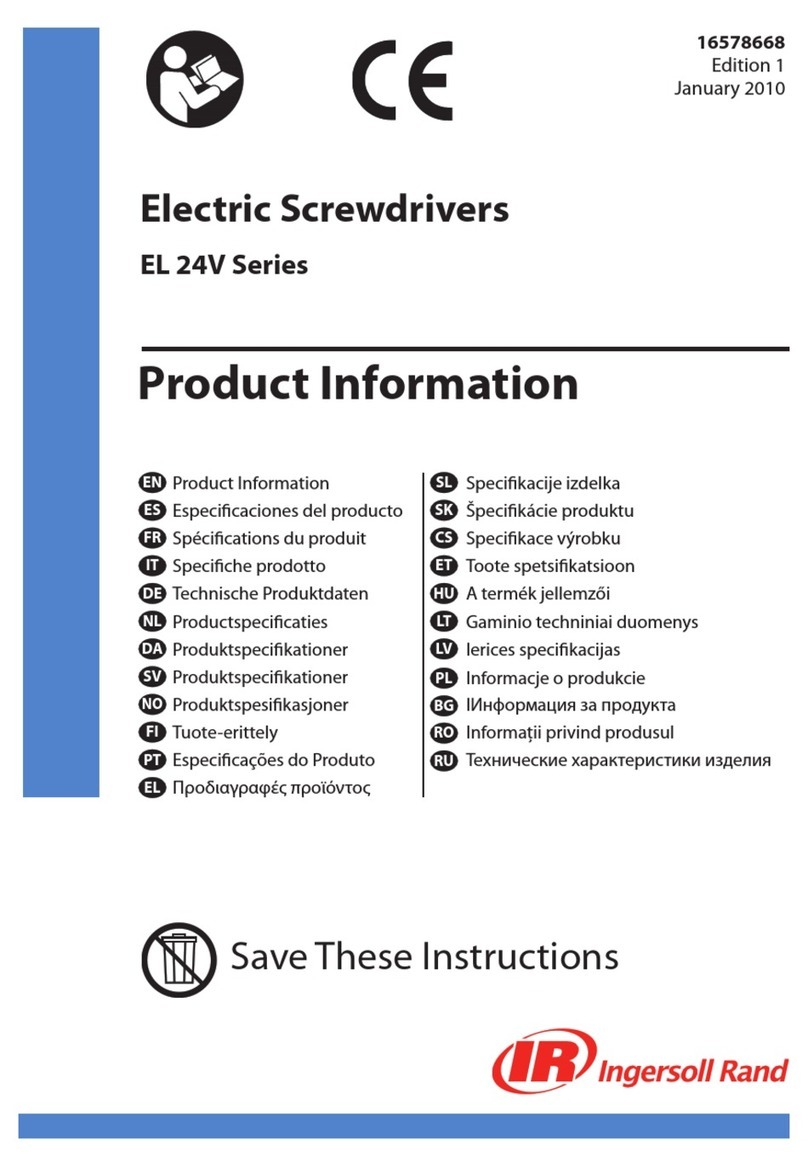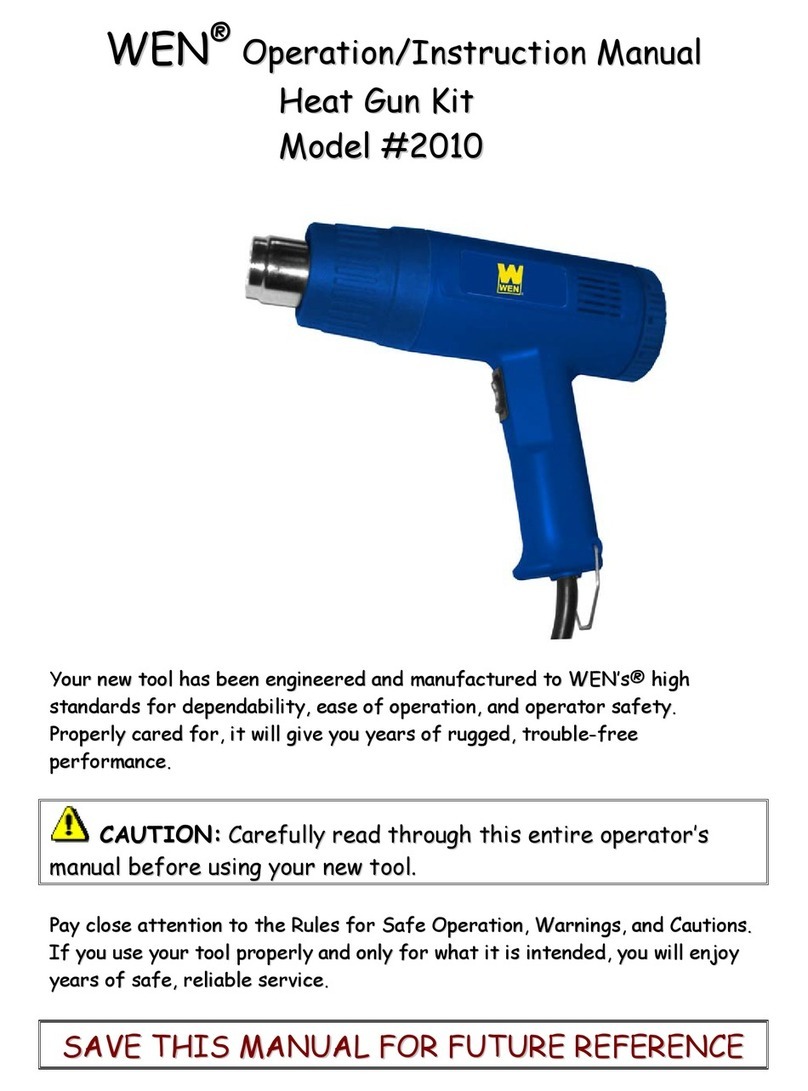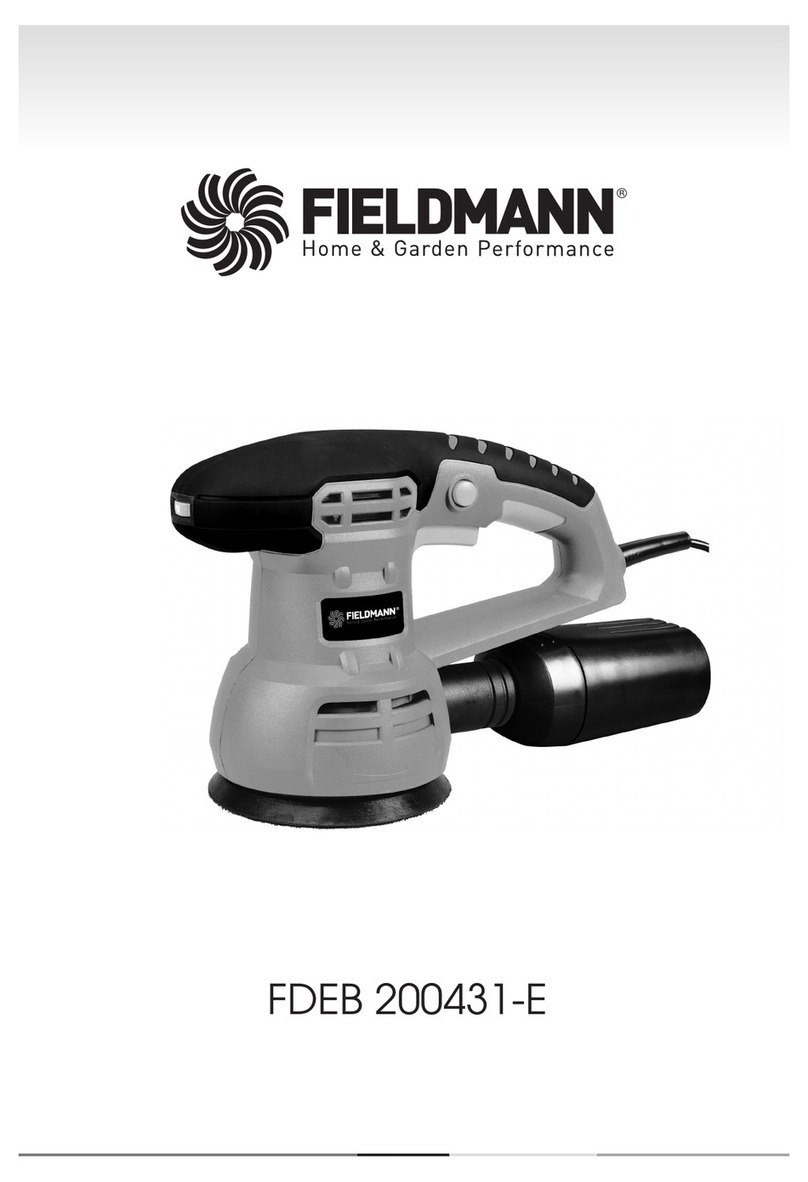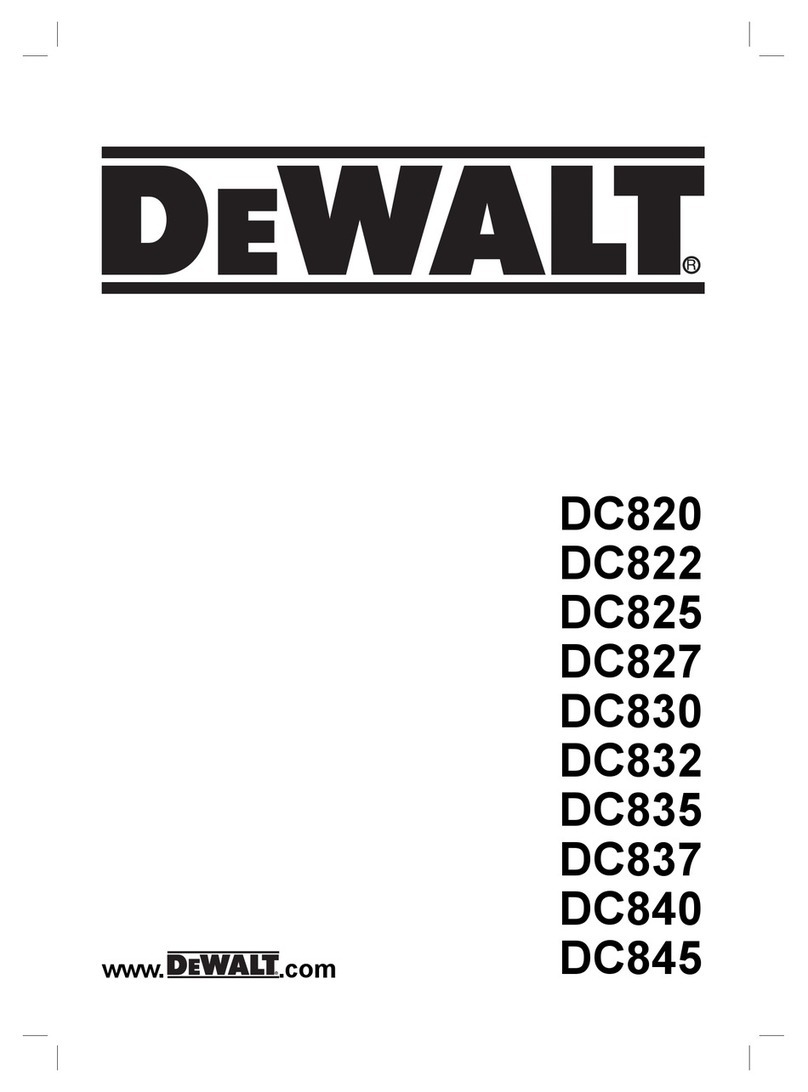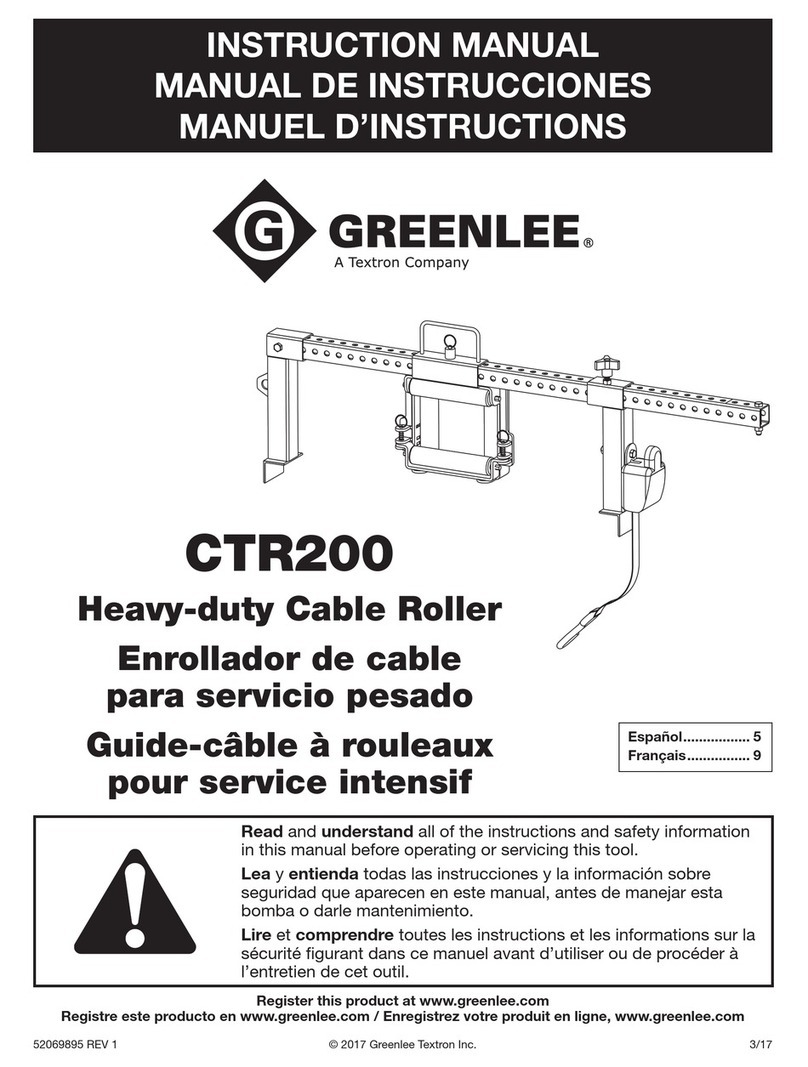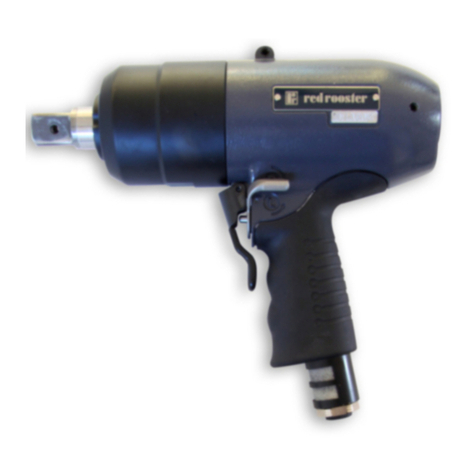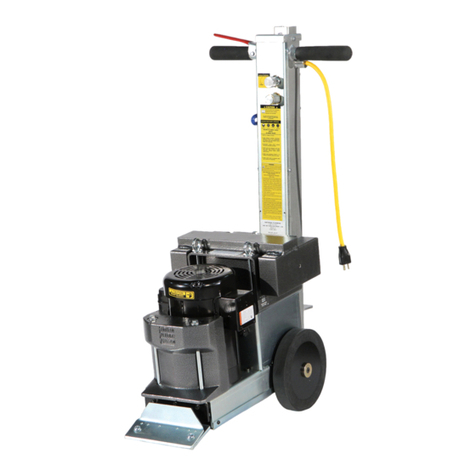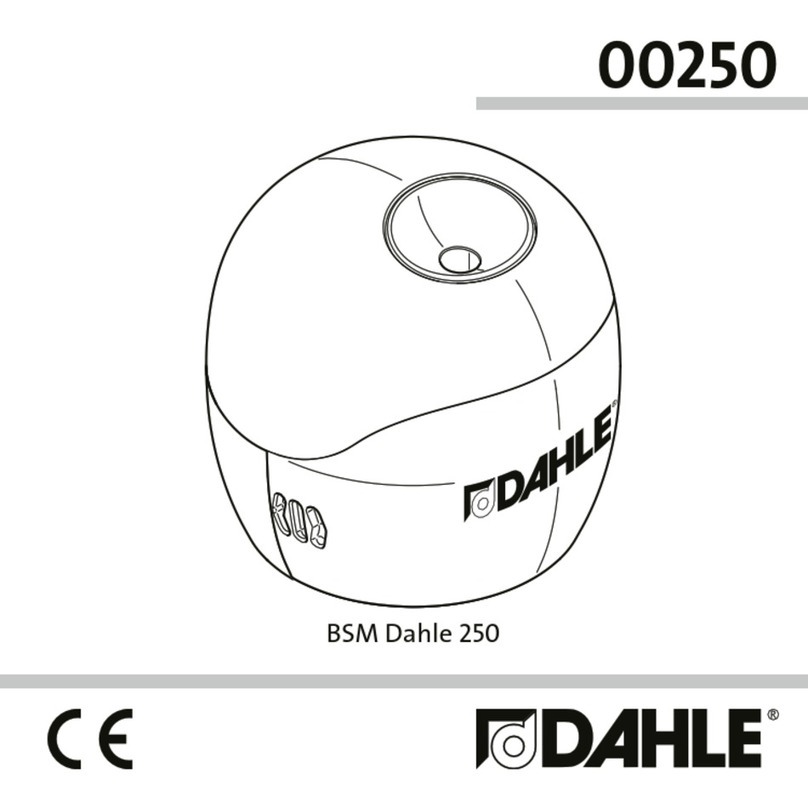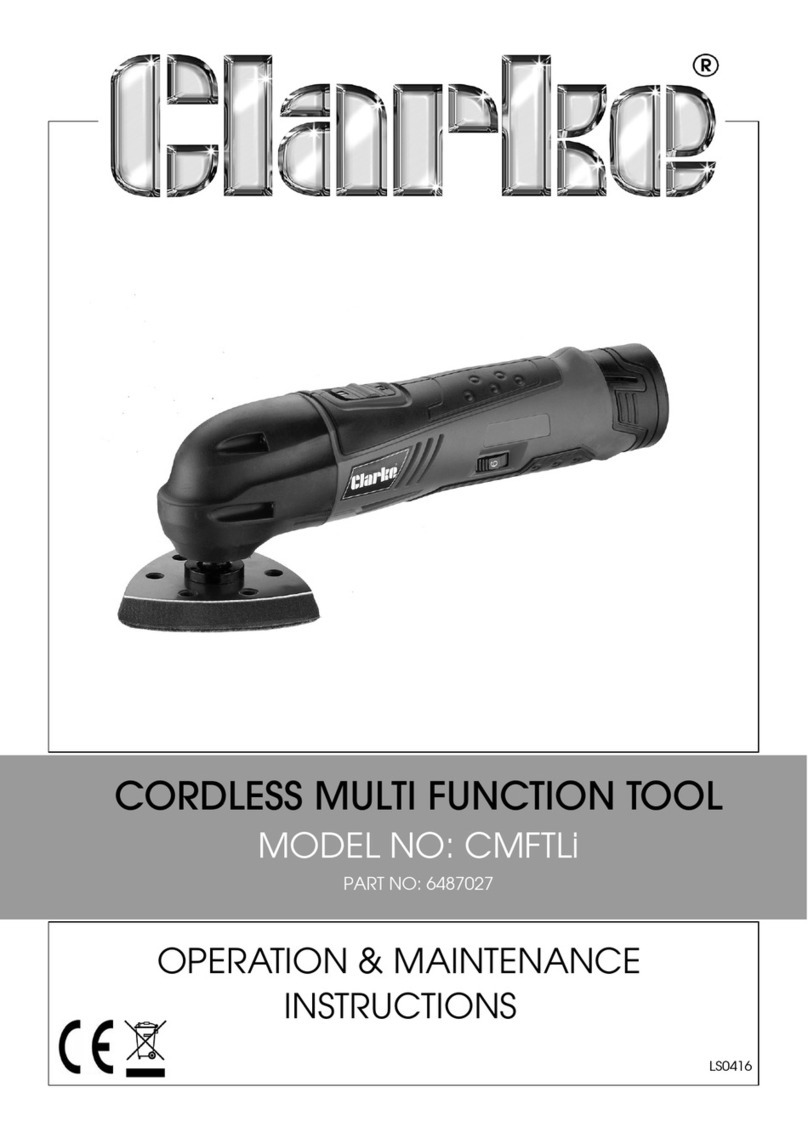haupa AH-12 User manual

... convincing solutions
El ctro-hydraulic crimping tool
„AH-12“
Art. 216503
INSTRUCTION MANUALHydraulic crimping tools
Vid o 216503

1. T chnical data
Area of application: For the creation of an electrical connection by means of compression
Scope of delivery: 1 crimping tool, 1 charger, 1 battery, 1 carry strap, in a plastic case,
without dies.
Pressing force: 120 kN
Oil type: ISO class viscosity 15
Feed rate: 2 speeds: Closing (fast) feed to bring the pressing dies to the conductor
and working feed for compression. Switching between the two speeds is
carried out automatically.
Safety: The tool is fitted with a safety value that has been set at the factory.
Structure: The working head can be rotated by 180° to make it easier to adapt to
the operation to be carried out. The hydraulic crimping tool does not
protect the operator when working on cables that carry power.
Guarantee: 2 year guarantee if used for the purpose it is intended.
2. Ar a of work
2.1. Sensortechnology
• Pressing force in kN: 120 kN
• Working pressure in bar: 700
• Opening/ Hub: 20 mm
• Pressing width: width
• Motorstop
• H-h ad „D p Ind nt Pr ssing“: Cu/Al Tube Cable lugs and connectors
• Crimping range cable lugs: Cu 10-400 / DIN Cu 10-300 / DIN Al 16-240
• Crimping range connectors: Cu 10-400 / DIN Cu 10-300 / DIN Al 16-240
• Pressing time, battery-operated in seconds: 6-12
• Battery charging time in minutes: 120
• Battery type: Li-Ion, 18 V, 4 Ah
• Dual-piston pump
• Weight in kg: 7
• Weight of set in kg: 12
With the different colours of the sensor LED, it shows whether the pressing has
been completed successfully or which errors have occurred:
Light is green: Pressing completed as standard, motor stopped
Light is orange: Battery voltage not sufficient
Light is red: Pressing interrupted before completed
The device also has 2 white LED designed to illuminate the working area.

Germany: HAUPA GmbH & Co. G, önigstraße 165-169, D-42853 Remscheid.
Phone: +49 (0)2191 8418-0, Fax: +49 (0)2191 8418-840, [email protected] • Errors and technical changes reserved.
nglish
... convincing solutions
3. Op rating instructions
CAUTION! TOOLS MAY NEVER BE USED WITHOUT FIRST INSERTING THE PRESSING DIES.
Ensure that the pressing dies fit precisely to the appropriate area and are seated perfectly in
the holders.
OTHERWISE THIS MAY CAUSE SERIOUS DAMAGES OR BREA AGES AND THE GUARANTEE
WILL BE VOIDED.
Pr paration:
Before starting up the tool, read the operating instructions first.
All current-carrying elements in the area you are working in should be disconnected.
Otherwise the protective procedures for working in the vicinity of
components under current must be implemented. (DIN EN 50110)
Do not use the tool if you are tired or under the influence of medication, drugs or alcohol.
Take into account the valid accident prevention and safety regulations and use the tool exclu-
sively for the purpose for which it is intended.
Only electro-technically trained persons over 16 years of age may process connecting materi-
als using the tool.
The operating instructions must always be carried with the tool.
The instructions must have been read and understood by the user.
The operator must ensure that this is the case.
Op rating:
• Select the appropriate pressing dies for the connection to be pressed.
• Insert the pressing dies in the tool head. All of the pressing dies that can be used in
Pushbutton
to advance
Die holder
Pushbutton for
return movement

these models are half-circles, regardless of the type of crimping or pressing being carried
out. They are made up of two parts with identical external measurements, so that they both
can be inserted at will into the piston or the head.
• The procedure for inserting pressing dies is identical for mounting to both piston and head.
• The dies are inserted via the guides until they come to a stop at the blocking pin.
Op rating:
• When inserting into the piston, you must only ensure that this is pushed far enough forward
for the release button to be visible and accessible.
• To remove the dies, in both instances, the relevant release button must be activated.
Then allow the dies to slide out. Please note that in order to remove the inserts at the
piston, the steps listed above must be carried out in reverse order.
Start:
- Bring the tool to the working position.
- Select the appropriate pressing dies for the connection to be pressed.
- Insert the pressing dies in the tool head.
- Feed the conductor into the connector.
- Place the connector between the two pressing dies.
- Approach of the pressing dies (closing feed rate)
- Hold the tool securely and press the operating button to move the piston quickly
forwards until the pressing dies meet the connector to be compressed.
- As soon as the pressing dies start to compress the connectors, the system
automatically switches from closing feed to working feed.
- Press until the pressure limiter can be heard or the pressing dies meet.
- Pressing the front operating button takes the pressure off the system and piston travels
back (fully or partially, to directly carry out a second compression action).

Germany: HAUPA GmbH & Co. G, önigstraße 165-169, D-42853 Remscheid.
Phone: +49 (0)2191 8418-0, Fax: +49 (0)2191 8418-840, [email protected] • Errors and technical changes reserved.
nglish
... convincing solutions
4. Removing and inserting the battery
Hold the tool firmly a d press the battery release butto to remove the battery.
ATTENTION:
Never short-circuit the battery.
Inserting the battery
I sert the battery u til it clicks i to place. Make sure the poles are faci g the right way
Charging
Before usi g the tool, charge the battery as follows: Co ect the cable of the charger to a
socket (AC).
Inserting the battery into the charger
I sert the battery firmly, as show i here until it touches the bottom of the charging
compartment.
ATTENTION:
If the battery is inserted incorrectly, it will not only not be charged, it may also damage the
charger (e.g. by bending the terminals/short-circuiting).
Charging
Whe you i sert a battery i to the charger, the battery is charged
a d the chargi g light.
Whe the battery is fully charged, the chargi g i dicator shows 100% a d a beep.
Remove the battery immediately a d disco ect the charger from the mai s.
Attention!
Please remove the battery during trans ort and after
usage – because of avoiding dee discharge!

Permitted only on stabilized ower sources!
Charging only for HAUPA batteries!
Li-ion Battery & Charger Instruction
Li-ion Batterie
Voltage 18 V
Weight 0,380 kg
Length 120 mm
Width 70 mm
Height 80 mm
Capacity(Ah) 3Ah
Charge time 0 min.
Charge(for Li-ion)
Voltage 110V / 220V
Weight 0,430 kg
Length 175 mm
Witdh 90 mm
Height 80 mm
Feature Digitaler Monitor
Auto-Inductions laden
4 Ah
120 min.

Germany: HAUPA GmbH & Co. G, önigstraße 165-169, D-42853 Remscheid.
Phone: +49 (0)2191 8418-0, Fax: +49 (0)2191 8418-840, [email protected] • Errors and technical changes reserved.
nglish
... convincing solutions
Li-Ion Battery Manual Instruction
Panel Description:
1㸬Connect power shows , comes a beeping, and the fan rotates 2 seconds.
2㸬Fully charged, it shows and comes beeping every 3 seconds.
3㸬Unusual working == Too low voltage shows and comes a beeping every second.
4㸬Unusual working == Unusual temperature shows ᧨and comes a beeping every second.
5㸬The voltage is not rising after 10 minus charged. The battery is charged incompletely. The battery is faulty,
showing and coming beeping every 2 seconds by a second.
Specification:
1. The input power is external power DC24V 3Aᇭ
2. The charge voltage is 24V 2.5Aᇭ
3. When plug in the power, the panel shows and comes a beeping.
4. Uninstall the battery, the panel shows and twinkles every second.
5. Detect the battery voltage first and shows battery capacity rate when install battery.
6. When battery charged completed, the panel shows and comes beeping every 3 seconds.
7. When the voltage is too low, the panel shows and coms a beeping every second.
8. When the temperature is too high, the panel shows and comes a beeping every second.
9. The maximum charge time is 70 minutes. After 70 minutes, the charger will stop charging regardless the battery
is charged completed.
10. The full charged voltage for 18V Li-Ion battery is (5*4.3=21.5v); the voltage for 14.4V Li-Ion
is (4*4.3=v17.2v) (reference valve). The battery is coming with a protective plate which will stop charging automatically
when charged completely.
11. The lowest battery voltage for 18V Li-Ion battery is (2.9*5=14.5v); and the 14.4v is (2.9*4=11.6v).
12. It will stop charge when the battery temperature is higher than 65 degree centigrade.
13. The usual temperature for battery is between -20° to 65° centigrade when a fan is applied. The fan working voltage is 12V.
14. Under 90% battery capacity will carry in adding per 5%. Over 90% battery capacity will carry in adding per 1%.

5. Car and maint nanc
Cl aning
• Careful cleaning of the tool, in particular, the moving parts contributes towards a longer
useful life. Remember that dust, sand, environmental influences, in particular a high salt
index, and dirt in general are extremely damaging to hydraulic tools.
• Particular care should be taken when cleaning the pump drive piston and the piston.
The tiniest of contaminations may scratch the walls of the cylinder and damage the
leak-proof seals. For correct cleaning of the piston, we recommend extending the piston
and then cleaning it with a high-quality, non-corrosive solution.
Pow r switch
Check to see whether the switch on the machine automatically pops out again when you release
it.
Filling l v l of th oil tank
Ensure that the oil level is always sufficient. Do not fill the tank with unsuitable oil or brake fluid.
Oil type: VESTA HLP-15 from VER OL or an oil of a similar quality. Remove the tank lid and top up
the oil. The oil must be filtered first. If necessary, purchase the required oil from the HAUPA service
centre (Art. 216254).
Storag
To prevent damage to the tool as a result of bumps, dust etc. you should if possible store the
tools in the original packaging.
Oil l v l
The oil level in the tank should be checked at regular intervals, in particular, when it has been
used for a long time and topped up whenever necessary.
Oil filling
This process should only be carried out by an authorised technician.
Important: The hydraulic oil must be filtered, have an ISO viscosity class of 15 and a viscosity
index of 100 and correspond to the standards AFNOR NFE 48603-HM and
ISO 6743/4 L-HM.
WARNING NOTES!
A natural working position is required in order to operate the tool correctly, thus the handle must
point downwards.

Germany: HAUPA GmbH & Co. G, önigstraße 165-169, D-42853 Remscheid.
Phone: +49 (0)2191 8418-0, Fax: +49 (0)2191 8418-840, [email protected] • Errors and technical changes reserved.
nglish
... convincing solutions
6. Diagnosing faults
Before you carry out any work on the tool, ensure that it is no longer connected to the power
supply.
CAUTION! If you have a problem that is not listed in the table below, contact your local tech-
nical customer support service for assistance.
6.1. WARNING NOTES!
Caution:
Do not attempt to force the head to turn when the hydraulic circuit is pressurised.
Guarant :
2 year guarantee when used for the purpose it is intended when the annual maintenance
intervals are maintained by an authorised HAUPA service centre. We reserve the right to
rework the product.
Disposal:
Individual components must be disposed off separately.
The oil must be drained and disposed of at the designated points.
Caution:
Hydraulic oils represent a risk to the groundwater. Uncontrolled drainage or incorrect disposal
carries penalties. (Environmental Liability Law)
The remaining components of the aggregate must be disposed in accordance with the rele-
vant environmental standards.
The disposal should be carried out by authorised specialist companies. The free return to the
manufacturer cannot be guaranteed.
Always use original replacement parts. Other parts may seriously damage the tool
and will void the guarantee.
If the tool still does not work correctly, send it to the nearest repair service
for specialist maintenance and fine tuning, or
send and email to: [email protected]
WITH EVERY REPLACEMENT PART ORDER, INCLUDE THE FOLLOWING INFORMATION:
1) Article number.
2) Article description.
3) Reference to the operating instructions and/or date.
4) Tool type.
5) Serial number of the tool.
The guarantee is voided if you use parts that are not original replacement parts from HAUPA.

HAUPA GmbH & Co.KG, Königstr. 165-169, 42853 Remscheid, Germany
EC declaration of conformity
HAUPA factory certificate
Remscheid, 23.03.2016
Product: Battery hydraulic cutting tools
Product range: Around the cable
Art. no.: 216418; 216419; 216422; 216424; 216428; 216430
Note: These tools are used for cutting unarmoured CU / AL cables.
Art. no. 216418, 216424, 216430 can additionally also
separate armored cables.
The tools are not isolated and it is forbidden to work under
tension.
HAUPA GmbH & Co.KG
Königstr. 169, 42853 Remscheid
Germany
Tel. +49 2191 8418 – 0, Fax +49 2191 8418 – 840
Herewith we declare that the above mentioned tools are manufactured according the
following guidelines:
CE guidelines 98/37/EEC, 89/336/EEC
Jens-Ole Paas Jochen Husli
Qualitätsmanagement Produktmanagement
EC
atardeclEC
a
f
HAUPA
confofoniat
r
e
c
y
r
o
t
c
a
ytimorconf
e
t
a
c
i
f
i
t
G,K.oC&HbGmAPUHA
561.rtsginöK- Re42853169,
ynamreG,diehcsmRe
This manual suits for next models
1
Table of contents
Other haupa Power Tools manuals
Popular Power Tools manuals by other brands
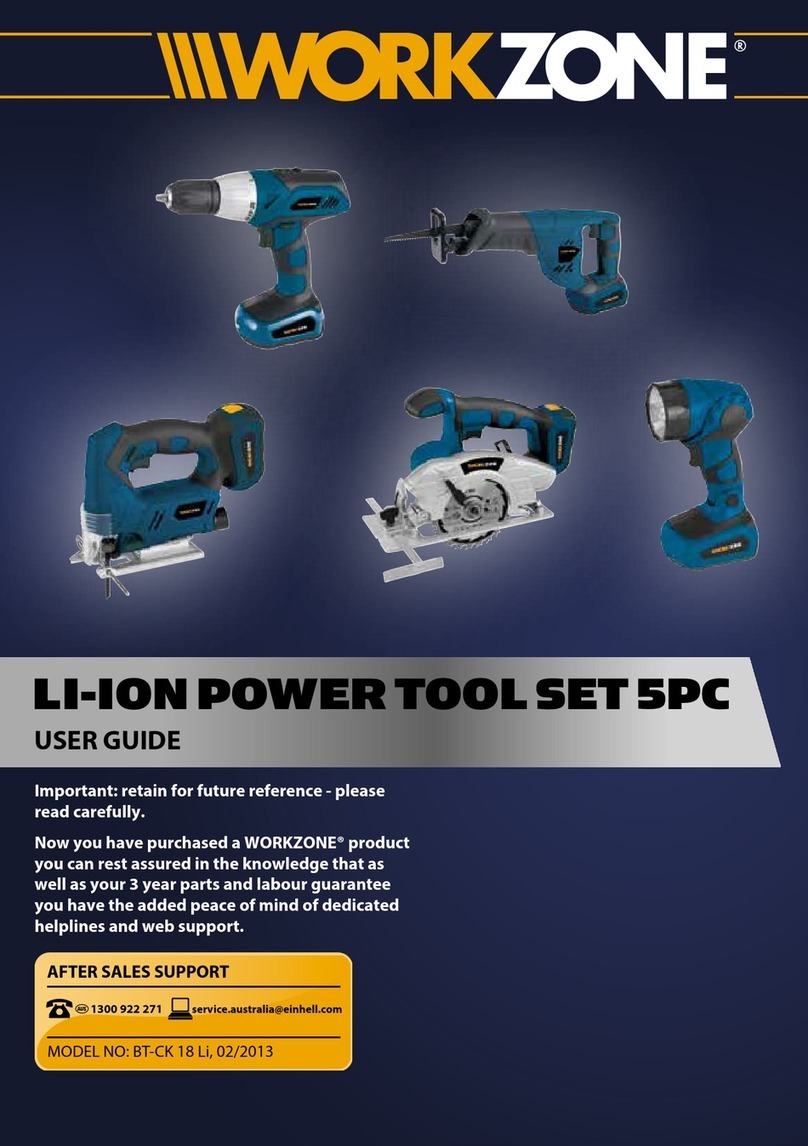
Workzone
Workzone BT-CK 18 Li user guide
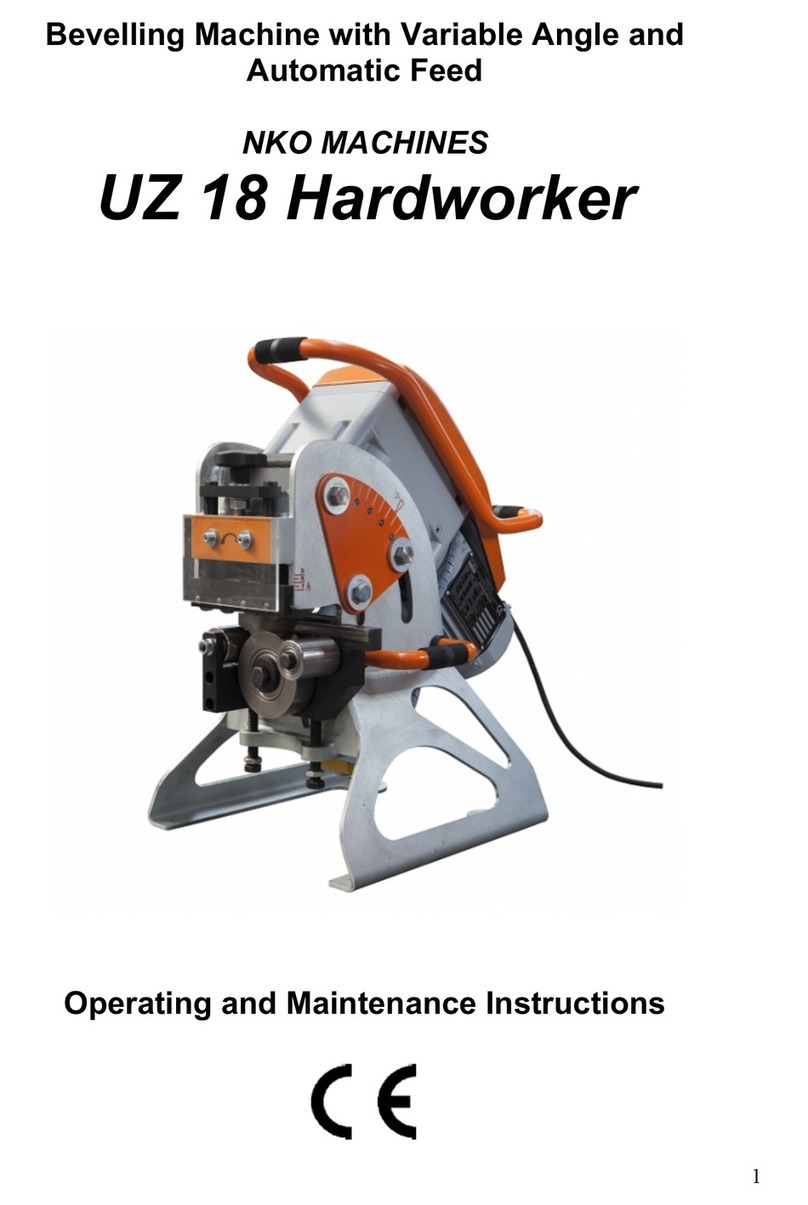
N.KO
N.KO UZ 18 Hardworker Operating and maintenance instructions

Milwaukee
Milwaukee 0566-1 Operator's manual
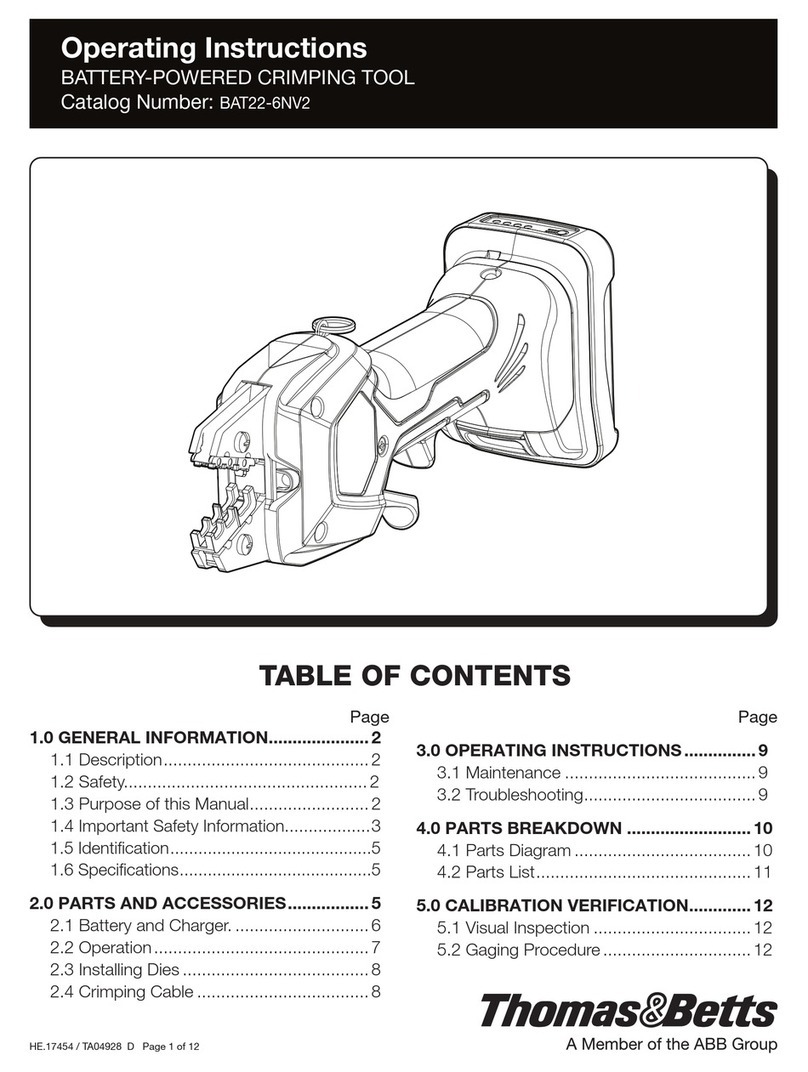
ABB
ABB Thomas&Betts BAT22-6NV2 operating instructions

Parkside
Parkside PDRD 13 A1 Operation and safety notes
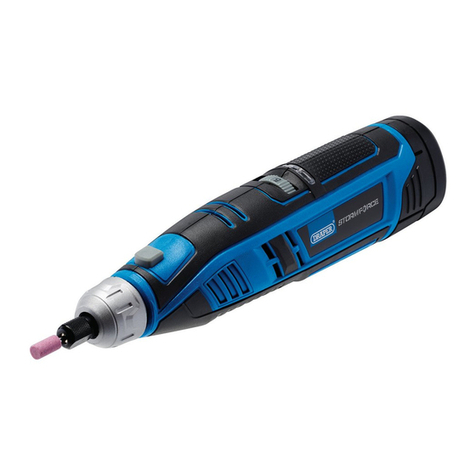
Draper
Draper STORMFORCE CMG108SF/BMC user manual


